Samsung Galaxy A80 vs Galaxy S10

On April 10, Samsung unveiled a bevvy of new A Series phones at its simultaneous launch events in Bangkok and Milan, with the new Galaxy A80 serving as the most powerful and interesting member of this latest lineup.
We’ve placed the Galaxy A80 against the company’s current flagship, the Galaxy S10, to see just how far the Apple falls from the tree.
We don’t often place mid-rangers up against flagships, even when they’re from the same manufacturer, however, the A80 brings a number of interesting technologies to the table, some of which are absent from the S10 lineup and some which we’ve never before seen on a Samsung phone, period.
Related: What the A80 tells us about the Galaxy S11
Samsung Galaxy A80 vs S10 – Design
There’s no disputing the quality of the offering made by the Galaxy S10, from its refreshed software to its powerful hardware, to its exceptional fit and finish. It is undoubtedly a worthwhile 2019 flagship handset, but for all its merits, it’s a touch bland.

The Samsung Galaxy S10
Its design centres around a similar glass and metal build to that of every other Galaxy S phone since the Galaxy S6, and just about every other flagship handset that’s available right now.
Its 6.1-inch Dynamic AMOLED Infinity-O display incorporates a front-facing camera that sits within the real-estate of the screen. This follows the hole-punch design pioneered by the S10 range. This sees the camera surrounded by pixels, while the display and the cover glass on top run to the edge of the phone’s front with almost zero bezel.
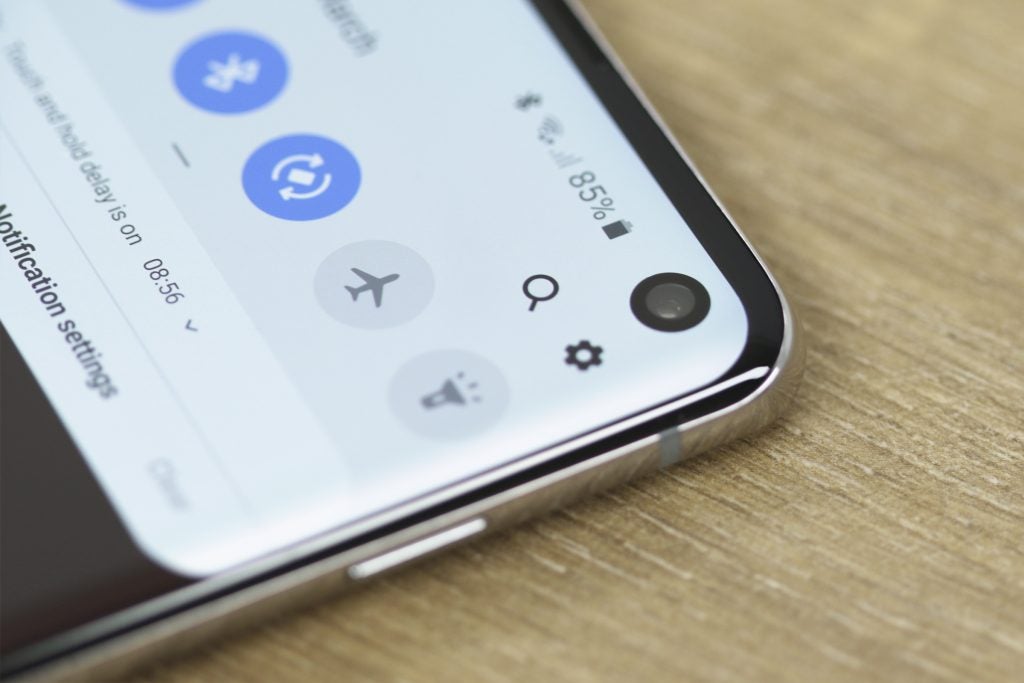
The S10’s hole-punch camera is instantly recognisable
There’s a headphone jack, USB-C port and stereo speaker output (by relying on the earpiece) all wrapped up in a body that despite its good looks, comes IP68 dust and water resistant too.
Related: Best Android phones
The new Galaxy A80 dwarfs the S10, with a significantly larger 6.7-inch (versus 6.1-inches on the S10) Super AMOLED display but there’s no notch or hole-punch camera to speak of. The A80 is the first example of a Samsung phone sporting a ‘New Infinity Display’, which is to say there’s no visible camera on the front at all, there’s not even a visible earpiece, just pixels to the edge of the phone’s narrow bezels.
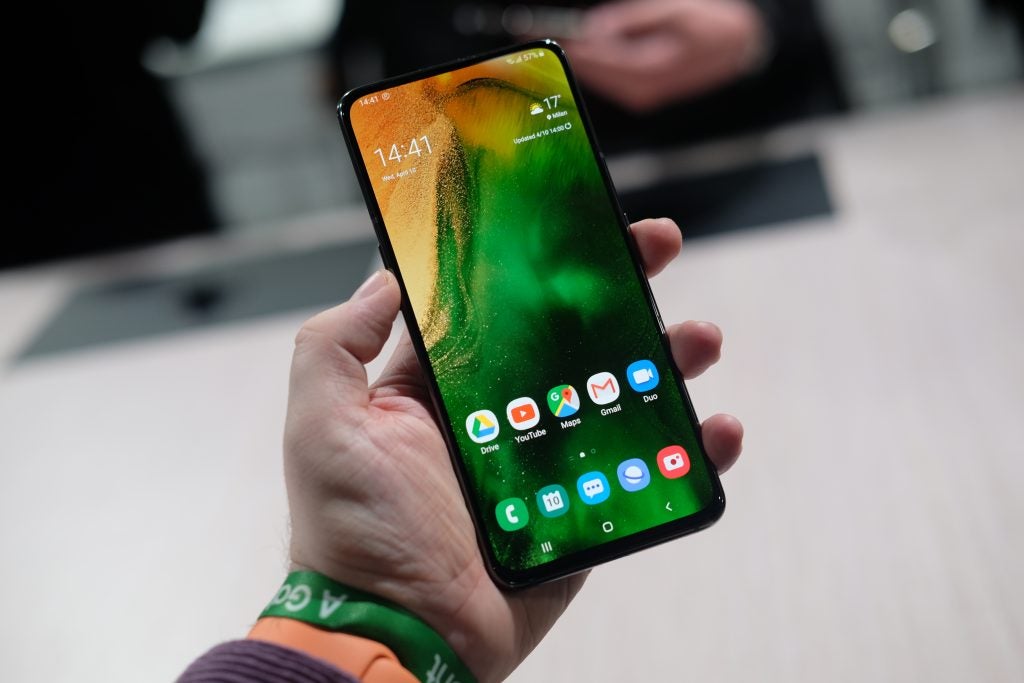
The sizeable Galaxy A80
Despite a lower resolution when compared to the Wide Quad HD screen on the S10, the A80’s sizeable panel offers a bigger and unobstructed view of content. So where’s the front camera? There isn’t one; not exactly.
Unlike the S10’s solution, the A80 uses a motorised sliding mechanism that raises the top of the phone up (similarly to the Oppo Find X) and in the process, flips the rear-facing triple camera module around to face forward. Samsung’s built the A80 with live-streaming and vlogging in mind, so it makes sense that users would want to be able to capture front-facing video with the best cameras on the phone.
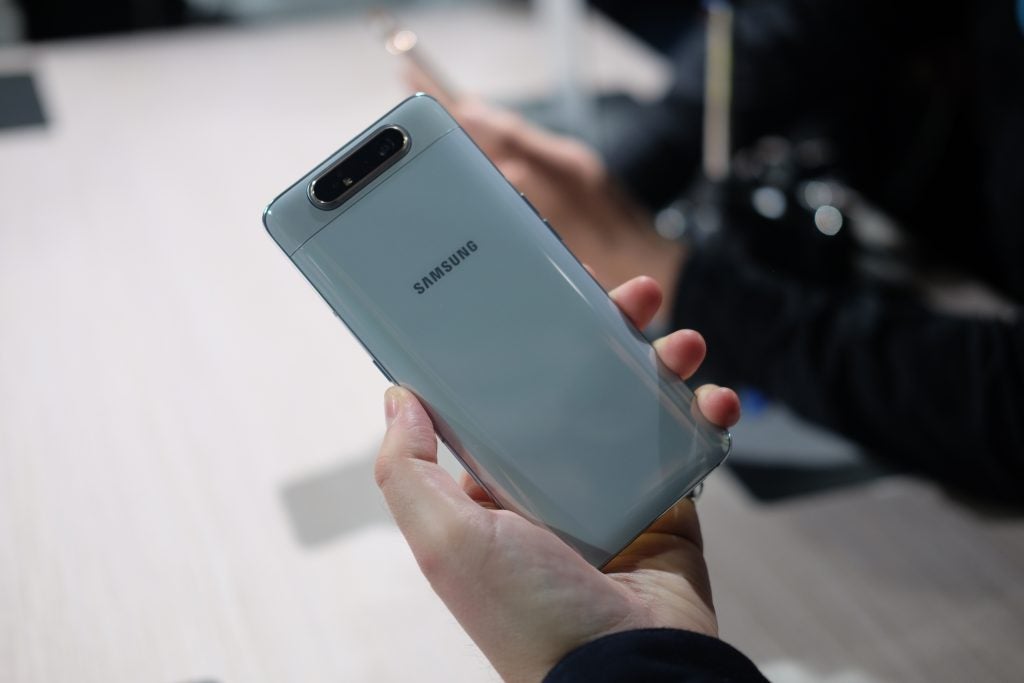
You can see the seam where the A80’s rear camera rises up
Naturally, moving parts like this, paired with the A80’s mid-range standing mean it doesn’t offer any sort of water resistance like the S10. As such, it’s unquestionably a little less hardy than the company’s top blower.
It also loses out on the S10’s wireless charging support and there’s no headphone jack; one of the notable inclusions amongst the S10 family.
Samsung Galaxy A80 vs S10 – Specs and cameras
Being a mid-ranger, the A80 sports a larger but lower resolution AMOLED display compared to the Samsung flagship. With regards to biometric authentication, it shares in the S10’s in-display fingerprint sensor technology but it’s likely an optical solution, instead of the S10’s more advanced (albeit imperfect) ultrasonic sensor – we’ve reached out to Samsung to confirm this.
| Galaxy A80 | Galaxy S10 | |
|---|---|---|
| Dimensions | 165.2 x 76.5 x 9.3 mm | 149.9 x 70.4 x 7.8 mm |
| Weight | Unknown | 157g |
| Display | 6.7-inch 2400 x 1080 ‘New’ Super AMOLED Infinity Display | 6.1-inch 3040 x 1440 Dynamic AMOLED Infinity Display w/ hole-punch |
| Rear camera | 48-megapixel f/2.0 + 8MP ultra-wide f/2.2 + ToF 3D depth sensor |
Dual Pixel 12-megapixel OIS f/1.5 – f/2.4 AF + 16-megapixel ultra-wide f/2.2 FF + 12-megapixel telephoto OIS f/2.4 AF |
| Front camera | Rear camera rotates to double as front camera | Dual Pixel 10-megapixel f/1.9 AF |
| Memory | 8GB + 128GB | 8GB + 128GB or 8GB + 512GB microSD up to 512GB (all versions) |
| Battery | 3700mAh | 3400mAh |
| Fast charging | 25W | 15W |
| Security | In-display fingerprint sensor | In-display ultrasonic fingerprint sensor |
| Processor | 8nm octa-core Qualcomm Snapdragon 730 | 8nm octa-core Exynos 9820 |
While memory and internal storage start as equals between these two phones, the A80 is among the first Galaxy handsets to not include microSD expandability, which might be a sign of things to come; we hope not. The S10 meanwhile, can accommodate memory cards up to 512GB on top of either 128GB or 512GB of internal space.
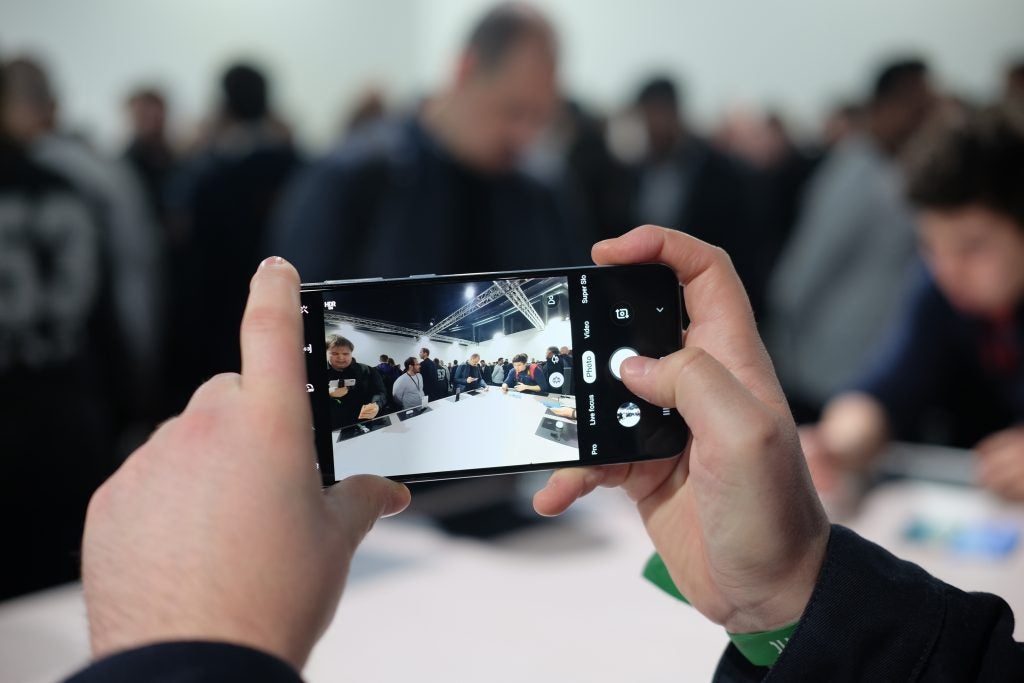
Naturally, the larger phone benefits from a larger battery, which paired with a more conservative processor and lower resolution display should result in longer battery life than the higher-powered flagship. What’s more, Samsung has been pretty slow to implement improved fast-charging on its phones, with only the S10 5G benefiting from such technology within the lineup.
The Galaxy A80’s sizeable 3700mAh power pack can be rejuvenated significantly faster than the S10’s by way of superior 25W fast charging.
There’s no faulting the S10’s impressive triple-camera arrangement, which grants you great quality shooting with its variable aperture main sensor, plus lossless zoom and an ultra-wide sensor for more versatile shooting.
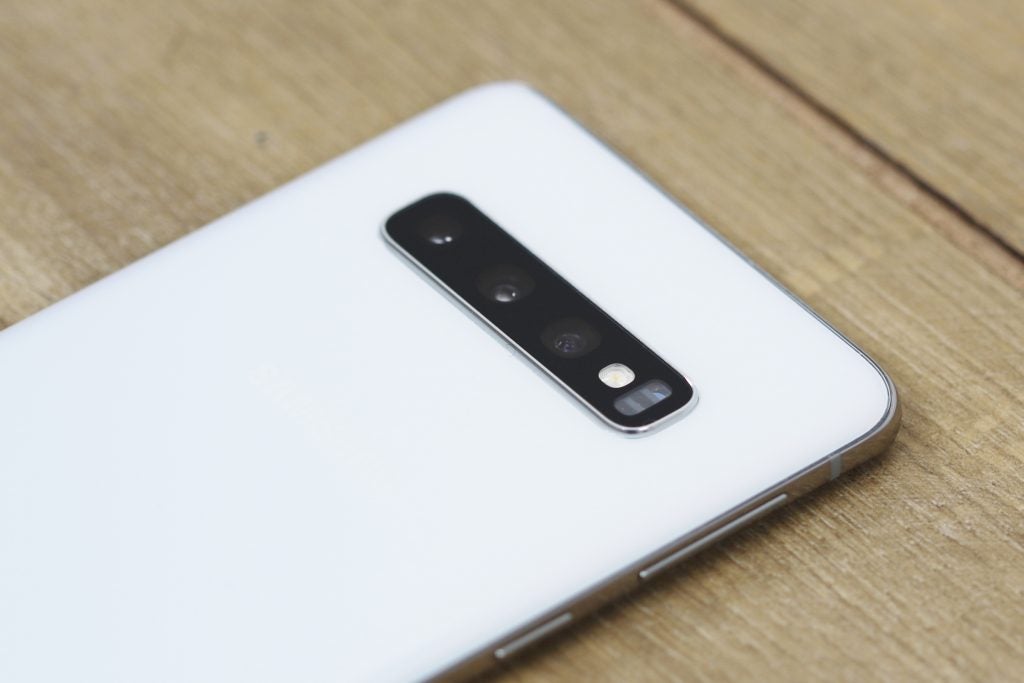
Amongst the S10 family a ToF sensor is only reserved for the 5G model
There’s some overlap, with the A80’s rear triple arrangement also granting you the option of ultra-wide capture (albeit at half the resolution of the S10).
The main sensor, however, is a whopping 48-megapixel effort (in place of the S10’s 12-megapixel offering) that likely uses pixel binning to render a superior quality 12-megapixel final photo. It’ll be interesting to see how these two main sensors compare come review time, especially in low light.
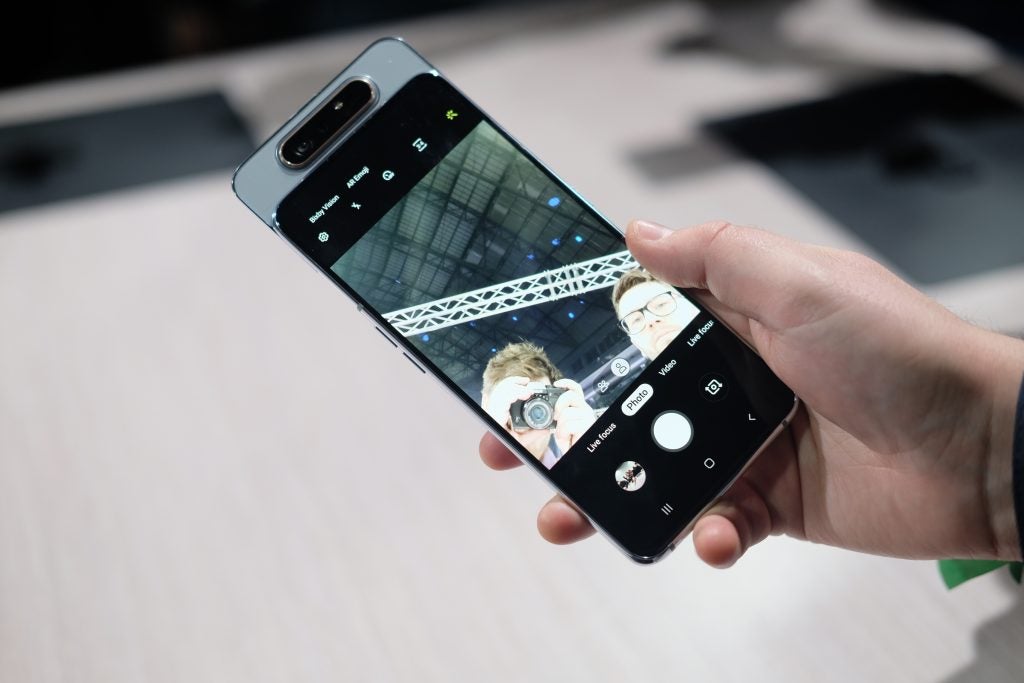
With the camera extended, the A80 is one tall handset
The third piece of the A80’s camera setup is actually a 3D ToF (time-of-flight) sensor, similar to those found on the S10 5G, Oppo RX17 Pro and Huawei P30 Pro. It helps the phone’s camera more accurately gauge depth to add bokeh (a natural-looking background blur) around a subject (or subjects) in-frame.
Related: Best camera phones
The A80 can use this feature when shooting video too (dubbed ‘Live Focus Video’); a rarer inclusion in the current smartphone landscape and something the standard S10 can only emulate.
There’s also the matter of the front-facing camera experience; the S10 uses a single 10-megapixel snapper while A80 users can make use of the full feature set of the phone’s main camera, including the ability to capture ultra-wide angle selfies.
Samsung Galaxy A80 vs S10 – Price and availability
The Samsung Galaxy S10 starts at £799 in the UK and is available now, those interested in the Samsung Galaxy A80 will have to wait until May 29 to get their hands on one, with pricing not yet announced.
There’s also no guarantee that the phone will launch in the UK, with double-digit A series phones previously being omitted from the British market. This phone might have what it takes to change that trend, however.


